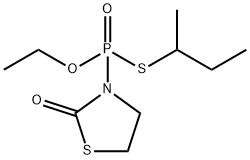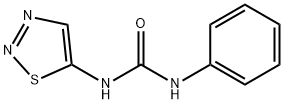Thiabendazole solution , 100μg/ml,u=2% , 148-79-8
Synonym(s):
2-(4-Thiazolyl)benzimidazole;Thiabendazole
CAS NO.:148-79-8
Empirical Formula: C10H7N3S
Molecular Weight: 201.25
MDL number: MFCD00005587
EINECS: 205-725-8
| Pack Size | Price | Stock | Quantity |
| 1ML | RMB95.20 | In Stock |
|
| others | Enquire |
PRODUCT Properties
| Melting point: | 298-301°C |
| Boiling point: | 446.0±37.0 °C(Predicted) |
| Density | 1.2271 (rough estimate) |
| vapor pressure | Negligible at room temperature |
| refractive index | 1.5500 (estimate) |
| storage temp. | Sealed in dry,Room Temperature |
| solubility | Soluble in methanol and dimethyl sulfoxide. |
| pka | pKa 4.7 (Uncertain) |
| form | powder |
| color | light yellow |
| Water Solubility | 0.005 g/100 mL |
| Merck | 14,9289 |
| BRN | 611403 |
| InChIKey | WJCNZQLZVWNLKY-UHFFFAOYSA-N |
| LogP | 2.470 |
| CAS DataBase Reference | 148-79-8(CAS DataBase Reference) |
| NIST Chemistry Reference | Thiabendazole(148-79-8) |
| EPA Substance Registry System | Thiabendazole (148-79-8) |
Description and Uses
Thiabendazole is a broad-spectrum anthelmintic that is active against a variety of helminths. In sheep, thiabendazole (50 mg/kg) kills greater than 95% of adult worms from ten genera, including Trichostrongylus, Cooperia, Nematodirus, Ostertagia, Haemonchus, Oesophagostomum, Bunostomum, Strongyloides, Chabertia, and Trichuris. It also inhibits production of eggs and disrupts larval development. Thiabendazole inhibits fumarate reductase in helminths, which inhibits succinate formation, and therefore energy production through the citric acid cycle. It also inhibits methionine aminopeptidase in E. coli (Ki = 40 nM; IC50 = 47.2 nM). Formulations containing thiabendazole have been used in the control of parasitic infections in livestock.
anticoagulant, rodenticide
Safety
| Symbol(GHS) |  GHS09 |
| Signal word | Warning |
| Hazard statements | H410 |
| Precautionary statements | P273-P501 |
| Hazard Codes | N,Xi |
| Risk Statements | 50/53-36/37/38 |
| Safety Statements | 60-61-36-26 |
| RIDADR | UN 3077 9/PG 3 |
| WGK Germany | 2 |
| RTECS | DE0700000 |
| TSCA | Yes |
| HazardClass | 9 |
| PackingGroup | III |
| HS Code | 29341000 |
| Hazardous Substances Data | 148-79-8(Hazardous Substances Data) |
| Toxicity | LD50 in mice, rats, rabbits (g/kg): 3.6, 3.1, >3.8 orally (Robinson) |



